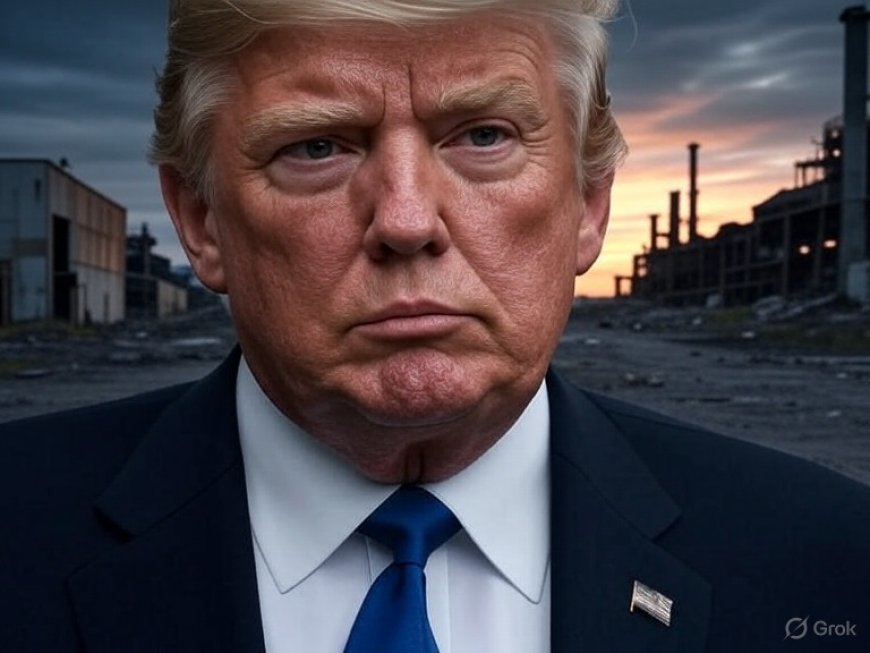Global Trade on Edge: Trump’s Proposed 10% Surtax on BRICS-Aligned Nations Sparks Market Uncertainty
President Donald Trump proposes a 10% import surtax on BRICS-aligned nations, raising fears of a global trade war. Market reactions and full details expected by July 9.

By Ronald Kapper
Published on: July 8, 2025
Category: World News | Politics
Introduction
Global financial markets are on alert as President Donald Trump pushes forward a bold and controversial trade initiative: a 10% surtax on imports from countries aligned with the BRICS bloc, effective August 1, 2025. With the list of targeted nations yet to be finalized and formal notification letters expected by July 9, the lack of clarity is rattling investors, economists, and international trade allies alike.
The surtax is part of Trump’s broader plan to “revive American industry” and punish nations he claims “undermine fair trade and U.S. interests.” Critics, however, warn it could spark a fresh global trade war, further disrupt supply chains, and damage U.S. consumer confidence heading into the 2026 midterms.
What We Know So Far: The BRICS Focus
The tariff announcement specifically targets BRICS-aligned countries—a powerful economic bloc comprising Brazil, Russia, India, China, and South Africa, with recent expansion to include Saudi Arabia, Iran, and others. President Trump has accused several of these nations of attempting to undermine the U.S. dollar, form anti-Western economic alliances, and support rival global infrastructure projects such as the BRICS Development Bank.
While the White House has yet to release a definitive list of impacted countries, reports from Bloomberg and other media suggest that Turkey, Argentina, and Egypt—all recent participants in BRICS summits—could be included.
“If you partner with America’s adversaries, you won’t get a free ride into our market,” Trump declared at a campaign rally in Pennsylvania last week.
Market Response: Volatility Ahead of July 9
Since the announcement, market uncertainty has intensified. The Dow Jones Industrial Average fell 1.2%, and global stocks followed suit, reflecting investor anxiety over retaliatory tariffs, particularly from China and India, two major BRICS economies with deep trade ties to the U.S.
According to a Wall Street Journal analysis, tech, automobile, and consumer goods sectors could suffer the most, with companies like Apple, Ford, and General Electric already issuing cautionary statements.
Multinational firms are also reassessing supply chain risks. “We are preparing for a pricing shock if the surtax goes through,” said Marissa Blain, Global Logistics Director at Whirlpool Corporation.
The Political Calculus Behind the Tariff Move
This surtax is being framed as a cornerstone of Trump’s economic nationalism, echoing policies from his first term that centered on reducing trade deficits and reviving American manufacturing.
Trump’s advisors claim the surtax will generate over $300 billion annually, funds that could be redirected to infrastructure, energy, and U.S.-based production. But trade economists argue this is an overly optimistic projection.
A report by the Peterson Institute for International Economics (source) warns that blanket tariffs could actually reduce U.S. GDP by 0.6% annually and cost up to 700,000 jobs due to price increases and retaliatory measures.
“This isn’t about protecting American workers—it’s about scoring political points,” said Senator Elizabeth Warren, calling the surtax a “disaster in the making.”
Legal and Diplomatic Ramifications
Experts say that imposing a 10% surtax across dozens of nations could violate international trade laws and lead to lawsuits at the World Trade Organization (WTO). While Trump is expected to justify the move using Section 232 of the Trade Expansion Act—claiming a national security rationale—such justification is likely to face court challenges.
Meanwhile, diplomats from India, Brazil, and South Africa have called the proposal “economic intimidation.” BRICS leaders are reportedly meeting behind closed doors to formulate a collective response, which could include new tariffs on U.S. goods and accelerated efforts to use the BRICS currency platform to bypass the dollar in trade.
Potential Fallout for U.S. Consumers
If implemented, the surtax is expected to raise prices on everything from electronics and clothing to furniture and vehicles. Data from the Brookings Institution (link) shows that similar tariffs under Trump’s previous term raised costs for U.S. households by an average of $830 per year.
With inflation still hovering around 3.8%, the added pressure on consumer spending could risk slowing down the post-pandemic recovery. “Tariffs are hidden taxes,” said consumer rights advocate Rachel Green of the American Economic Liberty Project. “They don’t hurt foreign governments—they hit American families at the checkout counter.”
What to Expect on July 9
According to senior administration officials, formal letters detailing the surtax policy will be dispatched to foreign embassies and trade departments on July 9, solidifying which countries will face the import tax. This is expected to trigger a 30-day comment period, after which implementation will begin in full on August 1.
Several Democratic lawmakers are already drafting legislation to block or delay the surtax, setting up a possible showdown in Congress.
Conclusion
President Trump’s aggressive tariff proposal marks a significant escalation in the U.S.’s approach to international trade. With global supply chains already strained and geopolitical alliances shifting rapidly, this policy could define not just the remainder of Trump’s presidency but also the future of American economic leadership on the global stage.
As the world watches and reacts, businesses, consumers, and policymakers must prepare for what could become a pivotal shift in global trade relations—one that could alter markets and alliances for years to come.














